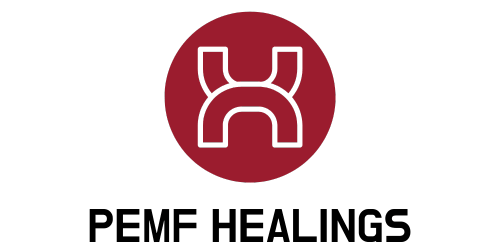Imagine if there was a non-invasive treatment that could potentially assist in the battle against cancer. Well, that’s where PEMF comes into play. PEMF, or Pulsed Electromagnetic Field therapy, has shown promising results when used as an adjunctive therapy for cancer patients. In this article, we will explore the relationship between PEMF and cancer and how this innovative treatment option could possibly make a difference in the lives of those affected by this devastating disease.
What is PEMF?
Definition and explanation of PEMF
PEMF stands for Pulsed Electromagnetic Field therapy. It is a non-invasive, drug-free treatment method that utilizes electromagnetic fields to improve the overall well-being of the body. These electromagnetic fields are delivered through various devices such as mats, bracelets, or full-body systems.
How PEMF therapy works
PEMF therapy works by emitting electromagnetic waves that penetrate the body’s tissues. These waves create electrical currents within the body, which can help stimulate cellular activity and promote healing. This therapy is based on the understanding that electromagnetic fields play a crucial role in maintaining the body’s natural balance and have the potential to support its self-healing mechanisms.
Cancer Overview
Explanation of cancer
Cancer is a complex disease characterized by the abnormal and uncontrolled growth of cells. These mutated cells can invade nearby tissues and spread to other parts of the body, causing significant damage. Cancer can affect various organs and systems, and it is classified based on the specific type of cells where it originates.
Types of cancer
There are numerous types of cancer, each with its own unique characteristics and treatment approaches. Some common types include breast cancer, lung cancer, prostate cancer, colorectal cancer, and leukemia. Each type of cancer requires tailored treatment protocols to address its specific characteristics and stage of progression.
Causes of cancer
The development of cancer is often influenced by an interplay of various factors, including genetic mutations, environmental exposures, lifestyle choices, and certain infections. These factors can lead to the disruption of normal cellular processes, resulting in the uncontrolled growth of cells and the formation of tumors.
Current treatment options for cancer
Currently, the treatment options for cancer depend on several factors such as the type and stage of cancer, as well as the overall health condition of the individual. The main treatment modalities include surgery, chemotherapy, radiation therapy, targeted therapy, immunotherapy, and hormone therapy. These treatments aim to remove or destroy cancer cells, halt their growth, or reduce symptoms and improve quality of life.

PEMF and Cancer
Potential benefits of PEMF therapy for cancer patients
PEMF therapy has shown potential benefits for cancer patients as a complementary treatment method. It can help promote overall well-being, reduce treatment-related side effects, and support the body’s self-healing mechanisms. PEMF therapy has been reported to improve energy levels, reduce pain, enhance sleep quality, and improve overall quality of life in cancer patients.
How PEMF therapy can be used as an adjunct to traditional cancer treatments
As an adjunct to traditional cancer treatments, PEMF therapy can be used to enhance the effectiveness and tolerability of these treatments. For example, it has been suggested that PEMF therapy may help increase the sensitivity of cancer cells to treatments such as chemotherapy or radiation therapy, potentially improving their efficacy. Additionally, PEMF therapy may help reduce the dosage of certain medications or alleviate treatment-related side effects, making the overall treatment experience more comfortable for patients.
Studies and research on PEMF therapy for cancer
Several studies and research have been conducted to explore the potential benefits of PEMF therapy for cancer patients. These studies have shown promising results, suggesting that PEMF therapy has the potential to inhibit the growth of cancer cells, enhance the efficacy of treatments, and improve quality of life. However, more research is needed to fully understand the mechanisms of action and establish conclusive evidence regarding its effectiveness as a standalone or adjuvant therapy for cancer.
Mechanism of Action
How PEMF therapy interacts with cancer cells
PEMF therapy interacts with cancer cells by emitting electromagnetic waves that penetrate the body’s tissues and reach the affected area. These waves induce electrical currents within the cancer cells, leading to changes in cell membrane permeability, intracellular signaling, and gene expression. These changes can potentially interfere with cancer cell growth, metabolism, and survival mechanisms.
Effects of PEMF therapy on cancer cell growth and proliferation
Studies have shown that PEMF therapy can have a significant impact on cancer cell growth and proliferation. It has been observed that exposure to specific electromagnetic frequencies can inhibit cancer cell division, induce apoptosis (cell death), and reduce tumor size. Furthermore, PEMF therapy has been reported to modulate various cellular pathways involved in cancer progression, including angiogenesis (formation of new blood vessels), cell cycle regulation, and immune response.
Enhancement of cancer treatment efficacy using PEMF therapy
PEMF therapy has the potential to enhance the efficacy of traditional cancer treatments such as chemotherapy and radiation therapy. Research suggests that combining PEMF therapy with these treatments can synergistically improve their outcomes. For instance, studies have shown that PEMF therapy can enhance the permeability of cancer cell membranes, allowing chemotherapeutic drugs to enter more effectively and increase their cytotoxic effects. Similarly, PEMF therapy can sensitize cancer cells to radiation, making them more susceptible to its damaging effects.

PEMF and Pain Management in Cancer Patients
How PEMF therapy can alleviate pain in cancer patients
Pain is a common symptom experienced by cancer patients, both due to the disease itself and its treatments. PEMF therapy has demonstrated potential in alleviating pain associated with cancer. It can help reduce inflammation, stimulate nerve regeneration, and modulate pain perception. By targeting the underlying mechanisms of pain, PEMF therapy provides a non-pharmacological approach to pain management, offering an alternative or complementary option to conventional pain medications.
Reducing the need for pain medication with PEMF therapy
One of the significant advantages of PEMF therapy in pain management is the potential to reduce the need for pain medication. Pain medications often come with side effects and can be addictive. By utilizing PEMF therapy, cancer patients may be able to reduce their reliance on opioids and other pain medications, thereby minimizing the associated risks and improving their overall well-being.
Improving Immune System Function
Role of the immune system in fighting cancer
The immune system plays a crucial role in identifying and eliminating cancer cells from the body. It is responsible for recognizing abnormal cells, activating immune responses, and coordinating the destruction of cancer cells. However, cancer cells can develop mechanisms to evade the immune system’s surveillance and attack, allowing them to proliferate and spread. Enhancing immune system function is key to effectively combating cancer.
How PEMF therapy can enhance immune system function
PEMF therapy has shown promise in enhancing immune system function. It has been reported to stimulate the production and activity of immune cells such as natural killer cells, macrophages, and T-cells. Additionally, PEMF therapy has been shown to regulate immune cell signaling, cytokine production, and facilitate communication between immune cells, all of which contribute to a strengthened immune response against cancer.
Strengthening immune response with PEMF therapy
By strengthening the immune response, PEMF therapy can help the body better recognize and eliminate cancer cells. This can potentially slow down tumor growth, prevent metastasis, and improve overall treatment outcomes. PEMF therapy offers a non-invasive and natural approach to enhancing immune system function, complementing existing cancer treatments and providing a holistic approach to cancer care.
Reducing Side Effects
Potential for PEMF therapy to reduce side effects of cancer treatments
Cancer treatments such as chemotherapy and radiation therapy often come with significant side effects that can impact patients’ quality of life. PEMF therapy has shown potential in reducing these side effects, making the treatment experience more tolerable for patients. Research suggests that PEMF therapy can mitigate treatment-related fatigue, nausea, vomiting, and neuropathy, potentially improving adherence to treatment regimens and overall patient well-being.
Alleviating nausea, fatigue, and other common side effects with PEMF therapy
Nausea and fatigue are among the most common side effects of cancer treatments, especially chemotherapy. PEMF therapy has demonstrated effectiveness in alleviating these symptoms. By stimulating cellular energy production, improving blood circulation, and reducing inflammation, PEMF therapy can help alleviate treatment-induced fatigue. It can also modulate neurotransmitter activity and reduce the release of certain substances that are associated with nausea, providing relief for cancer patients.
Patient Testimonials
Real-life experiences of cancer patients using PEMF therapy
Numerous cancer patients have reported positive outcomes and improvements in their quality of life after incorporating PEMF therapy into their treatment plans. These patients have shared their experiences, highlighting pain reduction, improved energy levels, enhanced emotional well-being, and overall better tolerance of cancer treatments. While each individual’s experience may vary, these testimonials provide valuable insights into the potential benefits of PEMF therapy for cancer patients.
Positive outcomes and improvements in quality of life
PEMF therapy has the potential to improve the quality of life for cancer patients by addressing various aspects of their physical and emotional well-being. Patients have reported reduced pain and inflammation, improved sleep patterns, increased energy levels, and enhanced emotional resilience. By providing a non-invasive and holistic approach to cancer care, PEMF therapy offers patients an additional tool to manage their symptoms and improve their overall well-being.
Safety and Considerations
Safety precautions and guidelines for using PEMF therapy for cancer
While PEMF therapy is generally considered safe for most individuals, it is essential to follow safety precautions and guidelines, especially for cancer patients. It is crucial to consult with healthcare professionals before starting PEMF therapy, particularly if you are currently undergoing cancer treatments or have specific medical conditions. Healthcare professionals can provide personalized guidance, ensure the appropriate use of PEMF devices, and monitor your progress to maximize the potential benefits and minimize any risks.
Consulting with healthcare professionals before starting PEMF therapy
Considering the complexities of cancer and the individualized nature of treatments, it is vital to involve healthcare professionals in the decision to incorporate PEMF therapy into a cancer treatment plan. They can assess your specific situation, guide you on proper device selection and usage, and help you prioritize treatment approaches. Collaborating with healthcare professionals ensures a comprehensive and well-informed approach to cancer care, optimizing the potential benefits of combining PEMF therapy with conventional treatments.
Future of PEMF Therapy for Cancer
Advancements and ongoing research in the field of PEMF therapy for cancer
The field of PEMF therapy for cancer is continually evolving, with ongoing research and advancements. Scientists and researchers are exploring the mechanisms of action, identifying optimal treatment protocols, and conducting clinical trials to establish the efficacy of PEMF therapy for various cancer types and treatment stages. As the understanding of PEMF therapy’s potential benefits grows, it is expected to become increasingly integrated into mainstream cancer treatments.
Potential for integrating PEMF therapy into mainstream cancer treatments
The potential for integrating PEMF therapy into mainstream cancer treatments is promising. As research progresses and more evidence is gathered, healthcare professionals may consider PEMF therapy as a valuable addition to traditional treatment plans. The non-invasive nature and potential benefits of PEMF therapy make it an attractive option for improving cancer care, enhancing treatment outcomes, and addressing patients’ quality of life. Continued advancements and collaborations between researchers, healthcare professionals, and patients hold great potential for integrating PEMF therapy into mainstream cancer treatments in the future.
In conclusion, PEMF therapy holds promising potential as a complementary treatment modality for cancer patients. With its ability to alleviate pain, enhance immune system function, reduce treatment-related side effects, and improve overall well-being, PEMF therapy offers a holistic approach to cancer care. While further research is needed to establish its efficacy and optimal protocols, PEMF therapy represents a significant advancement in the field of cancer treatment and holds promise for the future integration into mainstream cancer therapies.


